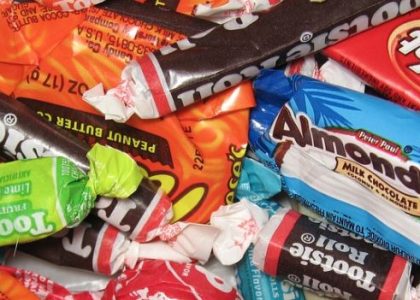Sugar has rallied more than 50% since the February lows, primarily based on supply concerns. There are current weather issues in South America and Southeast Asia as well as structural issues that will see the sugar market shift from surplus to deficit this calendar year. The common news reports regarding global El Nino issues combined with speculators increasing need to own something in a 0% yield investment landscape has led to a new large speculator record long position in the #11 sugar futures contract, according to the weekly Commitments of Traders report. We believe the record position is unsustainable.
Normally, we post daily charts because we're swing traders and we rarely hold a position for more than a couple of weeks. However, the setup here, requires more context. The commercial traders exert tremendous force in the sugar futures market. Speculators have set a net long record position at +317k contracts. Meanwhile, the commercial traders matched the speculators as they set a corresponding net short record at -366k contracts. This is all fine and well. The hidden force of the commercial position lies in the total positions numbers. Large speculators control approximately 375k contracts, 317k of which are net long. The commercial traders, on the other hand control a little over 1,000,000 contracts, three times the size of the speculative position.
The weather patterns that have developed versus total supply number concerns are expected to be a classic case of, "Buy the rumor; sell the fact." Commercial sugar growers are locking in all the forward production they can grow at these prices. And while we do expect sugar to make a long-term bottom this year, we feel the current rally is overpriced. We'll side with the record selling by farmers who don't expect to be able to receive these prices on the open market at the futures contract's expiration. We've seen this happen three times on the chart below. The first two times in late 2013 and spring of 2014, sugar cane growers came in and capped prices. Both of these instances saw large speculator capitulation and lower prices in the following weeks. We believe the speculators' recent success in box 3 has emboldened their behavior as they've now bought more and at higher prices than they did during this period to begin with. This is classic sign of a, "hot" market.

First and foremost, we wait for some sign of reversal. Whether we're going long or short, we always wait for some clue that the market is beginning to turn in our anticipated direction. This serves two purposes. One, as mentioned, it provides the turnaround clue but secondly, it provides us with a protective stop placement point. The idea behind swing trading is that the swing has swung and the market should revert towards it mean. Here's the trade. We're placing entry sell stops at strategic locations to create new short positions on a reversal and decline in prices. As these entry sell stops are executed, we'll place protective buy stops at the current swing high of 21.22. Given the market's expected shift to deficit later on, we'll hope to take profits between the 38% and 40% Fibonacci retracement levels.
Finally, we'll watch the commercial traders' behavior on the expected decline to determine when they feel the market is shifting from surplus to deficit. Hopefully, we can get back on the buy side once the fundamentals have come back into play and the long speculators have been washed out thus, leaving us closer to a value priced entry.
For more on our methodology, visit CotSignals.com. If you'd like to have this reversal signal delivered to your mailbox, there's a good chance it will come during a 30-day free trial of our Discretionary CotSignals.




